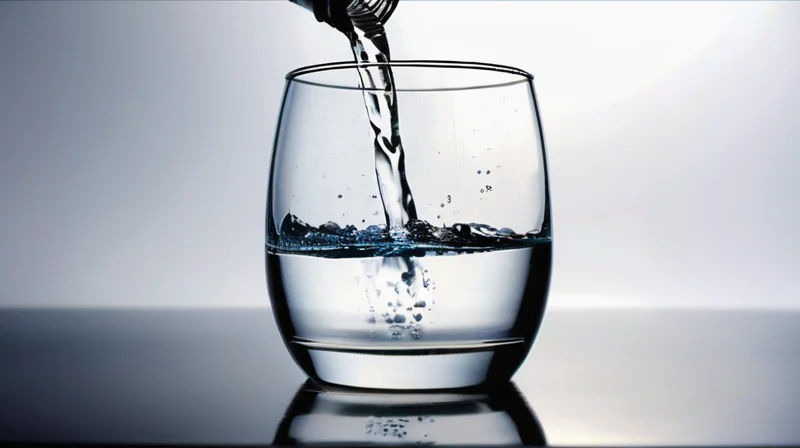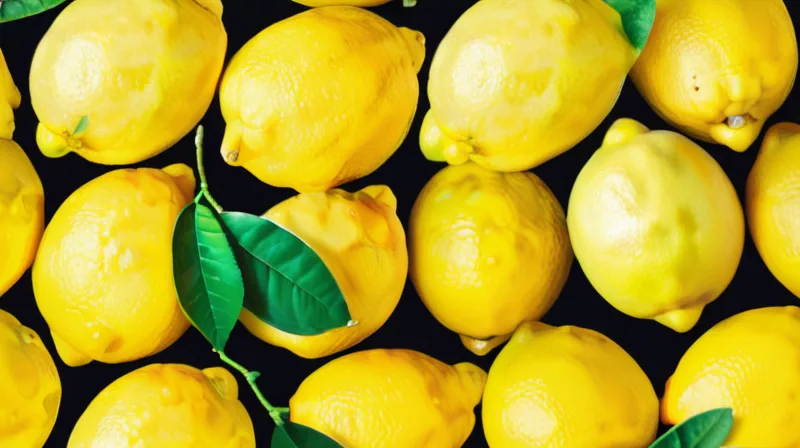Discover nine effective eco-friendly laundry whiteners to brighten your clothes without using bleach.
Learn about natural whitening agents, non-toxic bleach substitutes, and chlorine-free whitening solutions for your laundry needs.

Why Your White Clothes Look Dull
It’s pretty normal for clothing to show some signs of wear and tear over time, but there are some lesser-known culprits that could be causing your white laundry to go dull. Here are some possible reasons your white laundry looks dingy:
1. Color Transfer
Imagine you’re painting a masterpiece and accidentally blend red into your white paint – suddenly, your pristine canvas is streaked with pink. The same mishap can occur in your washing machine. When colorful clothes bleed their dyes into the wash water, those dyes can latch onto your white fabrics, leaving them with a less-than-bright appearance. This is especially true if you mix heavy, dyed items like jeans or bright red shirts with your whites. To prevent this, separate your laundry by color, washing whites with whites only, and consider using color-catching sheets that trap dyes during the wash cycle.
2. Residue Buildup
Detergents and fabric softeners are supposed to make our clothes clean and soft, but they can sometimes leave a film if not used properly. Over time, this buildup can render your whites gray and lifeless. It’s like applying layer after layer of varnish to a once-bright surface; eventually, the layers obscure the shine underneath. To combat this, use the recommended amount of detergent (more isn’t always better), opt for detergents that rinse out more easily, and periodically run your washer with a mixture of hot water and vinegar to clean out any lingering residues.
3. Environmental Factors
Just like a white car shows dirt and smog more readily than a dark vehicle, white fabrics can act as magnets for environmental pollutants. Whether it’s smoke from cigarettes or exhaust fumes from busy city streets, these contaminants can subtly discolor your whites over time. The result? A dingy hue that’s hard to reverse. Keeping your whites covered outdoors and washing them after exposure to polluted environments can help maintain their brightness.
4. Body Oils and Stains
We all naturally produce oils, and when these oils mix with sweat, they can create a perfect storm for staining our clothes. Add to that the occasional food spill or beverage splash, and your whites can go from bright to blah in no time. These oils and stains not only darken the fabric but can also attract more dirt. Pretreating stains before washing and using a detergent with strong grease-fighting capabilities can make a big difference. Regularly washing at a slightly higher temperature can also help in breaking down oil and grease more effectively.
Related : At Home Dry Cleaning: 6 Secrets to Keep Your Clothes Looking New
Bleach Alternatives for Whitening Your Laundry
When it’s time to brighten your white clothing, bed sheets, and bath towels, many of us first turn to either chlorine or oxygen bleach. But there are other ways to whiten fabrics using natural whitening agents and non-toxic bleach substitutes. Most of these chlorine-free whitening solutions work best on natural fibers, like cotton or linen, and should only be used on white clothing without prints or contrasting trim to avoid fading.
Distilled White Vinegar

- Add one cup of distilled white vinegar to one gallon of hot water.
- Submerge the white fabric into the mixture and allow it to soak overnight.
- Launder as usual.
- Alternatively, add one cup of white vinegar to the rinse cycle when washing white or colorful clothing to help cut through the detergent residue that leaves clothes looking dull.
Lemons

- Mix a half cup of lemon juice (from about four lemons) into one gallon of hot water.
- Add white laundry to the lemon water and allow it to soak for at least one hour. You can leave it soaking longer, even overnight, to whiten.
- Wash as usual.
Baking Soda
- Stir one cup of baking soda into one gallon of boiling water, then remove from heat.
- Add the dingy white clothes to the mixture.
- Let them soak for at least an hour or overnight.
- Wash as usual.
Hydrogen Peroxide
- Use the same 3 percent solution sold in drugstores for first aid.
- Add one cup of fresh hydrogen peroxide to the washing machine’s bleach dispenser.
- Wash as usual.
Bluing
Mrs. Stewart’s Bluing commercial solution
- Dilute the bluing solution according to the directions on the package.
- Add the diluted bluing to the wash or rinse cycle.
- Follow the directions carefully, as bluing can fade after several washes but can be reused often.
Color Remover
- Follow the instructions on the color remover package carefully.
- Use the color remover on white fabrics made of cotton, linen, silk, wool, rayon, ramie, or synthetic fibers.
- Wash as usual after using the color remover.
Dishwasher Detergent
- Add one-fourth or one-half cup of powdered dishwasher detergent to a gallon of hot water.
- Ensure the powder completely dissolves.
- Add the dingy white clothes to the mixture and allow them to soak for at least 30 minutes.
- Wash as usual.
Borax
- Add a half cup of powdered borax per one gallon of warm water.
- Add the white clothes to the mixture and allow them to soak for at least 30 minutes or longer.
- Wash as usual.
Sunshine
- Hang white bed sheets, towels, or clothing in direct sunlight.
- Allow them to dry completely in the sun.
- The sun’s ultraviolet rays will naturally bleach and disinfect the fabrics.
Related : Dry Cleaning Prices: 5 Tips to Save Money on Your Laundry Bills
Why Use Bleach Alternatives for Whitening Laundry
While bleach is a common choice for brightening whites, it can be harsh on fabrics and the environment. Here are a few reasons to consider gentler alternatives:
1. Fabric Safety: Alternatives like baking soda or hydrogen peroxide are less likely to damage fabrics and reduce their lifespan compared to bleach.
2. Environmental Impact: Natural whitening agents like distilled white vinegar contribute less to environmental pollution, offering a more eco-friendly option.
3. Health Concerns: Non-chemical alternatives minimize exposure to irritants, making them safer for those with sensitivities or respiratory issues.
4. Preserving Fabric Integrity: Gentler options help maintain the quality and appearance of delicate items longer.
Adding a half-cup of baking soda to your wash or soaking clothes in a hydrogen peroxide solution can effectively whiten without the drawbacks of bleach, benefiting both your health and the environment.
Simple Ways to Prevent Your Laundry From Looking Grimy
Maintaining the pristine condition of white laundry can feel like a daunting task. However, with the right techniques and knowledge, you can keep your whites looking as bright as the day you bought them. Here’s how:
1. Separate Your Laundry by Color
One of the easiest and most effective ways to prevent color transfer is to separate your laundry by color. Washing whites with colors can lead to the dreaded dull and dingy look as colors bleed and deposit onto white fabrics. To avoid this, sort your laundry carefully, and consider washing new colored garments separately the first few times as they are more likely to bleed.
2. Using Color-Catching Sheets
To further protect your whites, try using color-catching sheets in your wash. These sheets work by trapping loose dyes released into the wash water, preventing them from settling on fabric. This article can guide you on how to use them effectively to safeguard your white items during mixed washes.
3. Run Your Washer with a Mixture of Hot Water and Vinegar
Over time, detergent and fabric softener residues can build up in your machine and on your clothes, making whites look dull. To clear out these residues, run your washer with a mixture of hot water and vinegar every few months. This simple maintenance not only cleans your washer but also ensures that no residue is left on clothes to make them look grayish.
4. Washing Them After Exposure to Polluted Environments
Environmental pollutants like smoke and exhaust can seriously affect your white clothes. If you’ve been in a smoky or polluted environment, wash your whites soon after to prevent any permanent discoloration. Washing them after exposure to polluted environments is crucial to maintaining their brightness.
5. Pretreating Stains Before Washing
Stains from body oils, food, and drinks are inevitable, but they don’t have to be permanent. Pretreating stains before washing can significantly increase your chances of removing them. Whether it’s a commercial pre-treat solution or a homemade paste of baking soda and water, applying it directly to stains can make a big difference.
6. Using a Detergent with Strong Grease-Fighting Capabilities
For body oils and tougher stains, a regular detergent might not suffice. Opt for a detergent with strong grease-fighting capabilities to effectively break down and wash away greasy residues. This kind of detergent will help tackle everything from ring-around-the-collar to food grease, keeping your whites looking fresh and clean.
By understanding these key points and implementing them into your laundry routine, you can greatly enhance the life and appearance of your white garments. Remember, it’s not just about washing clothes; it’s about caring for them in a way that keeps them looking their best for as long as possible.
FAQs
Frequently asked questions
Everything you need to know about CleanLifeGuard
Still have a questions in mind? contact us directly!
Can these bleach alternatives be used on colored clothes?
No, these non-toxic bleach substitutes shouldn’t be used on colored clothing as they can lighten and remove color from colored laundry. Stick to using these natural whitening agents on white fabrics only.
What bleach alternatives are non-toxic?
Distilled white vinegar, lemons, baking soda, bluing, and sunshine are all non-toxic bleach substitutes that can effectively whiten and brighten your laundry without the use of harsh chemicals. These gentle whitening options are safe for delicate fabrics and are perfect for those looking for more sustainable laundry whitening methods.
What’s the most eco-friendly bleach alternative?
The most eco-friendly bleach alternative isn’t a product. It’s sunshine. Free and easily accessible, the sun’s ultraviolet rays can help to brighten your white T-shirts and other laundry. Green alternatives to bleach that you already have on hand—like baking soda, lemons, and distilled white vinegar—are also eco-friendly options.
Resources
How to Wash Dry Clean Only Clothes | Whirlpool. Whirlpool.com. Published 2024. Accessed April 14, 2024. https://www.whirlpool.com/blog/washers-and-dryers/wash-dry-clean-only.html
Vora S. Yes, You Can Dry-Clean at Home: And These 5 Furnishings and Decor Pieces Need TLC. Architectural Digest. Published February 21, 2023. Accessed April 14, 2024. https://www.architecturaldigest.com/story/dry-clean-at-home-5-furnishings-and-decor-pieces-that-need-tlc